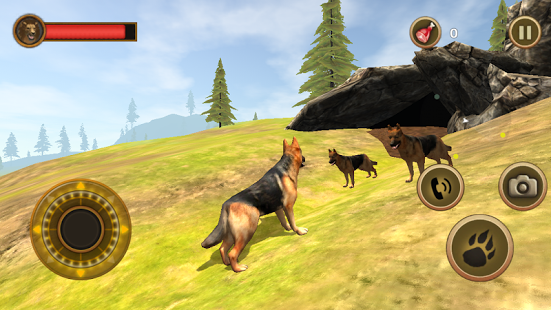
While working as a wild dog controller it was evident that pure dingoes (which are scattered throughout both the Pilbara and Gascoyne regions) are beneficial and predictable, while hybrid wild dogs are detrimental to cattle stations both productively and ecologically.īlanket baiting with the aim of eradication is far from effective and has Contributed greatly to the situation that the regions have now. Selective culling is far more beneficial to both the ecology of cattle properties as well as the ongoing productivity and Profits. I have offered alternative options for wild dog control that have proven successful on several cattle stations already. We also reserve the right to block or delete any comments that are abusive, incorrect, defamatory, or that don’t add to the discussion in any meaningful way. We welcome comments from readers who can add to, enhance, or shine a new light on the topics discussed in the article. We applaud anyone and everyone who is passionate about the welfare of animals. Some appear to believe, wrongly, that this magazine is somehow involved or connected with the research being described in the article. They will also be testing whether wild dogs can detect the scent of 1080-the poison used in baits.Ī NOTE FROM THE EDITOR: Since the publication of this article, it has attracted a lot of commentary from people about the topic of baiting. The research team will be working at locations in the Meekathara and Pilbara Recognised Biosecurity Groups (RGB) to carry out bait trials with both long-term baited and bait-naïve wild dog populations. “Baiting is the principal method of wild dog control used in Australia so it is important we seek to refine its practice,” Professor Fleming said. The second project will investigate alternative storage methods for baits to ensure they do not lose toxicity, and identify differences in their manufacture between different areas in WA. One of the new projects will identify the factors that make a bait more attractive to wild dogs, including the type of meat used and its presentation, and investigate further bait aversion, with the aim of improving bait uptake. Led by Professor Trish Fleming, the research has already provided insights into practical approaches to baiting to improve their attractiveness to wild dogs, and found evidence that older dogs in populations that have been baited for a long time develop learned aversion to the baits. Wild dogs, including free-living domestic dogs, dingoes or hybrids, cause millions of dollars of damage to sheep, goat and cattle production in Australia every year, and Murdoch researchers have been investigating ways to improve their population control for the last five years. Two years later, he obtained three genetic samples, which came from two dogs in live traps and one found deceased.Two Murdoch University research projects are aiming to improve baiting practice to help reduce harmful wild dog numbers.



At the time, he captured images of 15 individual dogs. The wild dogs were discovered near a gold mine in 2016 by zoologist James McIntyre, who went on to found and preside over the New Guinea Highland Wild Dog Foundation. There have been a few anecdotal sightings of these dingo-like canines over the years, though many conservationists assumed they were strays related to the captive singing dogs, which make a sound like a blend of wolf howls and whale calls. A genetic analysis of wild dogs, published Monday (August 31) in PNAS, confirms that these canines are still living in the wild. Fewer than 300 of their domestic counterparts, commonly called New Guinean singing dogs, are held in captivity across the globe, and their numbers are suffering from inbreeding. The distinct, mournful howl of a highland wild dog was once a mainstay in Papua, but for the past 50 years, scientists had considered them extinct in the wild.


 0 kommentar(er)
0 kommentar(er)
